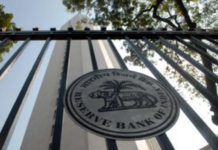By Vishal Gulati
Shimla– Illegal is now legal in Himachal Pradesh, once again.
For, the state assembly has passed a bill for legalising illegal constructions across the state, mainly dotted across this capital town, once known as the Queen of Hills.
Some of the buildings are in danger of collapsing like a pack of cards even with a moderate intensity temblor that can be catastrophic for congested settlements where extracting bodies would be difficult.
But it’s all within the legal framework, at least now.
Justifying the passage of the Himachal Pradesh Town and Country Planning (Amendment) Bill of 2016, Town and Country Planning Minister Sudhir Sharma told IANS that mass demolition of illegal buildings was not practical.
“So we have brought a one-time relaxation policy to get the illegal structures compounded,” he added.
Official sources said the amended bill would enable legalising over 25,000 unauthorised structures — both commercial and residential — in the state.
Successive state governments earlier brought the retention or regularisation policy on six ocassions from time to time.
“Five times the retention policy was brought to legalise constructions in Shimla town alone. In 2009, the policy was implemented in the entire state. So far, 8,198 applications have come but only 2,108 buildings have been regularised,” the minister said, adding the state High Court took serious note of this time and again.
“That is why we have carried out necessary amendments to the original act of 1977 to enable the people across the state to get the benefit of regularisation for the last time,” Sharma said.
Earlier, this bill was brought on February 19, 2014, but on the demand of the opposition BJP, it was referred to a select committee of the assembly. After that, the government twice promulgated an ordinance to regularise the buildings.
“The deliberate delays in tabling the bill gave enough time to the builders and influential people to complete the illegal constructions,” an official of the state’s Town and Country Planning Department told IANS.
Anguished over the government’s populist policies, Shimla resident Arun Sharma said: “Successive governments, be it the Congress or the BJP, have converted the towns literally into concrete jungles. It’s no matter that the buildings are structurally safe or not.”
P.C. Lohumi, who is settled in this town for over five decades, said all those who are supporting the retention policy, which would spell Shimla’s doom, have no right to talk about its degradation.
“It’s strange that all the political parties are supporting the violators of law indulging in illegal constructions and showing the mirror to law-abiding people. It’s simply a nexus among the corrupt politicians, builders and bureaucrats,” he added.
Tremors in the past have failed to shake authorities out of their slumber. Four low-intensity earthquakes hit state’s Kullu and Shimla districts on August 27.
The next day another mild quake hit Chamba district.
Officials fear that a high-intensity quake can turn Shimla town into a tomb of rubble as it falls in seismic zone IV-V, suggesting severest seismic sensitivity.
Planned for a maximum population of 16,000, Shimla now supports 2,36,000 people, as per provisional figures for the 2011 census.
“More than 200 public utility buildings, comprising hospitals and government schools and colleges within the municipal limits of Shimla require seismic strengthening,” Deputy Mayor Tikender Panwar told IANS.
In Sanjauli, a congested locality on Shimla’s outskirts, the dead often have to be lifted out of homes with ropes in case of mishaps.
Soon after the bill for legalising illegal constructions was passed, the state high court again expressed its displeasure.
“Thousands of unauthorised constructions have not been raised overnight. The government machinery was mute spectator by letting the people to raise unauthorised constructions and also encroach upon the government land,” a division bench of Justice Rajiv Sharma and Justice Sureshwar Thakur said earlier this week.
But fearing a backlash, Minister Sharma said: “If somebody raised structurally unsafe floors or buildings in the garb of getting them regularised, we will not regularise them.” (IANS)






